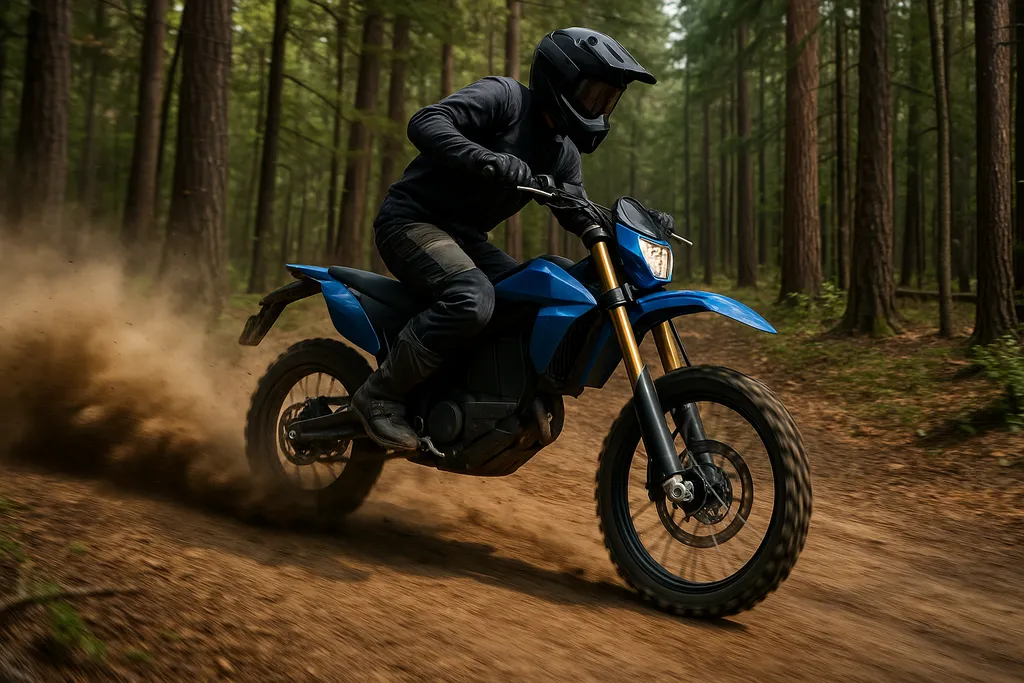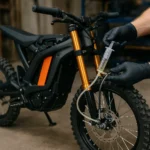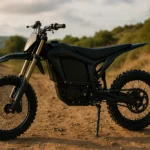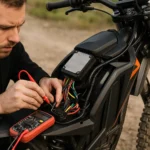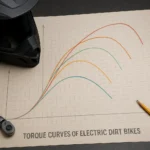Electric dirt bike torque comparison is the go-to topic for anyone serious about conquering the trails with raw force and instant acceleration. Whether you’re climbing steep terrain, launching off dirt mounds, or just craving that addictive pull when you twist the throttle — torque is what makes it all happen.
In this guide, we dive deep into the world of electric dirt bike torque comparison to uncover which models truly shine. While top speed often gets the spotlight, torque is the unsung hero behind responsive handling, quick takeoff, and real trail capability. This comparison is for the adventurous teens, supportive parents, and weekend warriors who want power they can feel.
🛞 When evaluating performance, it’s not just about numbers. The torque output, controller tuning, battery voltage, and weight-to-power ratio all influence how a bike behaves in the real world. That’s why our electric dirt bike torque comparison isn’t just a data dump — it’s a practical guide filled with insight.
You’ll see how top models like the Sur Ron Light Bee X, Talaria Sting, and Segway X260 stack up in actual trail conditions. Not just who wins the spec war, but which one dominates in responsiveness, low-end power, and ride feel. Our goal? To help you make the right call — whether you’re buying your first electric dirt bike or upgrading for more grunt.
⚙️ From brushless motors to peak torque ratings, we’ll break down the technical lingo into plain English. This guide will show how different torque levels affect control, confidence, and overall off-road joy.
If you’re wondering how torque compares to horsepower, or why some bikes “feel” faster despite lower top speed, you’re in the right place. This electric dirt bike torque comparison guide is built to answer those questions and more.
We’ll also share why battery specs and controller tuning matter more than you think — and how these can completely change the outcome of an electric dirt bike torque comparison.
So if you’re deciding between bikes or just want to understand why one model lifts the front wheel with ease while another struggles on climbs, keep reading. This is your ultimate breakdown of electric dirt bike power and pull.
🔋 Whether you’re testing hill-start torque, navigating tight corners, or pushing full throttle down a trail, we’ve got the comparison that cuts through the marketing fluff and shows what really matters.
And if you’re new here, check out our popular post on the fastest electric dirt bikes — it’s the perfect companion to this torque deep dive.
Key Takeaways
- Understand the difference between torque and horsepower (it’s bigger than you think)
- Learn how instant torque impacts off-road control and launch speed
- See which models outperform others in low-end torque delivery
- Discover how battery voltage and motor controllers shape performance
- Use our head-to-head comparison chart to make a confident choice
⚡ Looking for something specific? Use the quick links below to jump straight to the section you need most. 👇
What is Torque and Why Does It Matter for Dirt Bikes?
Torque is the secret sauce behind every thrilling launch and powerful climb on an electric dirt bike. It’s the force that turns the wheels — literally. While horsepower often gets more hype, torque is what you actually feel when you hit the throttle and the bike kicks forward with that gut-punch energy.
Think of it this way: if horsepower is how fast you can go, torque is how hard you can pull. It’s the difference between smoothly crawling up a steep hill and getting stuck halfway. That’s why any serious electric dirt bike torque comparison has to start here.
When comparing electric dirt bikes, it’s important to understand how torque directly affects acceleration, traction, and responsiveness. For off-road riding especially, higher torque means better control in tight spots, stronger performance on rugged trails, and less lag when you need power now.
One of the biggest benefits of electric motors is instant torque. Unlike gas engines, which build up power gradually, electric motors can unleash full torque from zero RPM. That’s why even smaller bikes can feel incredibly punchy off the line. Riders who do a proper electric dirt bike torque comparison often discover that a mid-range e-bike can outperform a high-horsepower gas bike in certain terrain.
Parents buying for younger riders also benefit here — torque can be tuned or limited on many electric models. This flexibility makes them safer and more beginner-friendly while still delivering fun and excitement.
Whether you’re tearing up switchbacks or navigating loose sand, torque is what gives you confidence. And as you’ll see throughout this guide, it plays a bigger role than most people realize when it comes to real-world performance.
Understanding this fundamental concept is key before diving into the deeper electric dirt bike torque comparison ahead — because numbers alone never tell the full story.
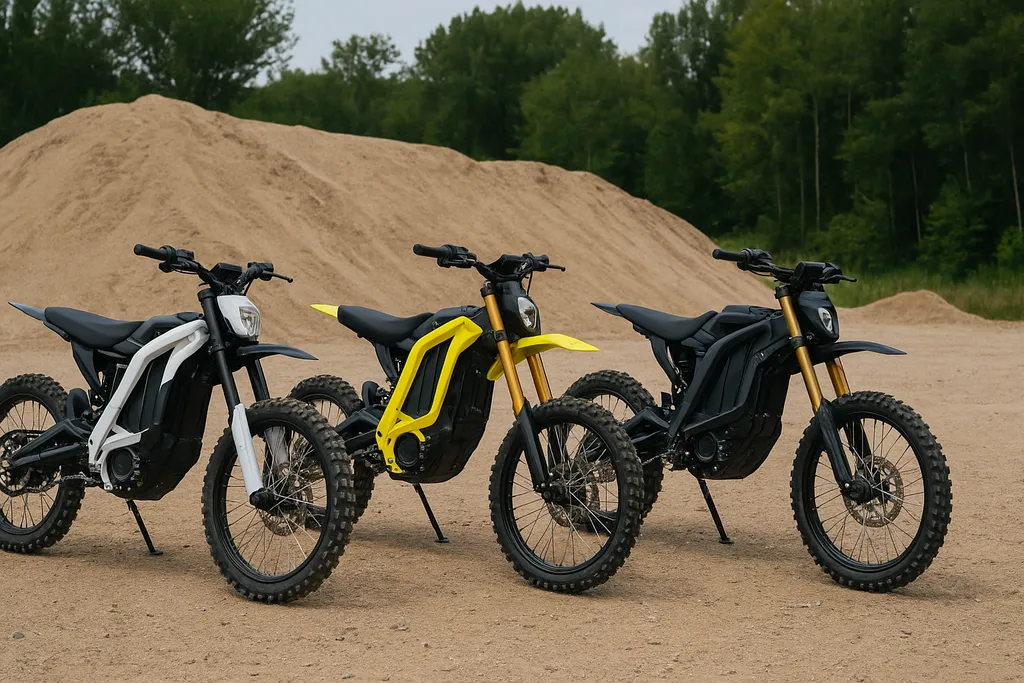
Key factors that influence torque in electric dirt bikes
When it comes to performance, torque isn’t a standalone number — it’s shaped by multiple components working together. To get a true electric dirt bike torque comparison, you need to look under the hood (and behind the throttle) at what really impacts the pull of the machine.
First up: battery voltage and amperage. The higher the voltage, the more potential there is to deliver torque quickly. Bikes running 72V systems often have a noticeable edge in responsiveness compared to 48V or 60V models. But voltage alone isn’t enough — the controller has to be capable of unleashing that power efficiently.
The motor type also plays a major role. Brushless motors, now standard in most performance electric dirt bikes, offer smoother power delivery and less heat buildup. Combined with advanced controllers, they allow for more precise tuning and stronger torque curves.
Another important piece of the puzzle is controller tuning. Even two bikes with identical motors and batteries can feel completely different on the trail depending on how the controller is programmed. Some prioritize smooth acceleration, while others go all-in on low-end power. In serious electric dirt bike torque comparison testing, this often becomes the deciding factor.
Let’s not forget the weight-to-torque ratio. A lighter bike with moderate torque can outshine a heavier one with slightly higher specs — especially when navigating technical terrain. The rider’s own weight also affects how much of that torque translates into acceleration versus wheel spin.
For a more technical breakdown of how these elements interact on the trail, check out this detailed article on torque in electric off-road motorcycles. It offers a clear look at how different setups impact climb performance and throttle response in real-world situations.
Ultimately, the best electric dirt bike torque comparison goes beyond numbers. It digs into how power is created, delivered, and felt — because when you’re out on the trail, that’s what makes all the difference.
7 electric dirt bikes with the best torque (ranked)
When it comes to choosing the right bike, raw numbers speak volumes — especially torque. Below, you’ll find a ranked list of the top-performing models in terms of low-end force, throttle response, and trail capability. These bikes stand out in any electric dirt bike torque comparison for their ability to deliver real, usable power in off-road conditions.
Each bike was evaluated based on its peak torque (in Newton-meters), battery setup, voltage, top speed, and best-use scenario. This isn’t about bragging rights — it’s about finding the right ride for how you use it.
| Model | Peak Torque | Battery | Voltage | Top Speed | Best Use |
|---|---|---|---|---|---|
| Sur Ron Light Bee X | 250 Nm | 60V 32Ah | 60V | 47 mph | Trails, freestyle |
| Talaria Sting R MX | 270 Nm | 60V 38Ah | 60V | 53 mph | Enduro, hill climbing |
| Segway X260 | 220 Nm | 60V 32Ah | 60V | 46.6 mph | All-around riding |
| Rawrr Mantis | 280 Nm | 72V 45Ah | 72V | 50 mph | Steep trails, torque-focused riders |
| Delfast Top 3.0 | 182 Nm | 72V 48Ah | 72V | 50 mph | Dual sport, long range |
| Kuberg Freerider | 140 Nm | 48V | 48V | 34 mph | Teen riders, light trail use |
| Cake Kalk OR | 280 Nm | 51.8V | 51.8V | 56 mph | Premium, balanced ride |
What separates these bikes in a true electric dirt bike torque comparison is how they use that torque. For example, the Rawrr Mantis and Cake Kalk OR might tie on raw output, but they feel completely different under load due to motor tuning and weight distribution.
It’s also worth noting that some models offer adjustable torque mapping, allowing riders to tune their ride based on terrain and skill level. That flexibility can be a game-changer for beginners and advanced riders alike.
While top speed gets the headlines, torque is what lets you blast up a hill, pull out of corners, and keep control when the trail gets rough. And in this category, these seven bikes truly lead the pack.
Which electric dirt bike has the best low-end torque?
Low-end torque is where the magic happens — it’s the power you feel the moment you twist the throttle, especially at slow speeds or when climbing obstacles. In any electric dirt bike torque comparison, this specific factor separates average bikes from true off-road beasts.
The standout in this category is the Talaria Sting R MX. It consistently delivers immediate and aggressive torque from a dead stop, making it ideal for steep climbs, switchbacks, and technical terrain. The responsiveness in the first few seconds of throttle input gives riders the confidence to push harder on demanding trails.
Close behind is the Cake Kalk OR, which offers an ultra-smooth yet powerful low-end delivery. While it may feel more refined than the punchier Talaria, it still provides excellent climbing power and precision for riders who want control without sacrificing performance.
Low-end torque isn’t just about raw numbers — it’s about how the bike applies that torque. A well-tuned controller, a balanced frame, and proper tire grip can make a mid-range motor feel far more capable than one with higher peak specs but poor response.
This is why some electric dirt bikes with lower torque on paper can outperform others in real-world trail tests. The Talaria, for instance, feels more aggressive than some models rated at higher peak torque simply because of how effectively it delivers power at low RPM.
In summary, if you’re focused on conquering technical trails, rocky terrain, or steep hills, pay attention to low-end torque. It’s the kind of force that gets you moving when it counts most — and often determines whether you glide over the challenge or stall halfway through.
Mid-range vs. peak torque: what should you care about?
When diving into an electric dirt bike torque comparison, it’s easy to get caught up in big peak torque numbers. But what really matters for most riders is how that torque performs across the entire powerband — not just at its highest point.
Peak torque is the maximum force a motor can produce, usually measured in Newton-meters. It looks impressive on spec sheets, but it’s only available for a brief moment under specific conditions. If a bike delivers 280 Nm for a split second and then drops off, that number becomes less meaningful in real-world riding.
Mid-range torque, on the other hand, refers to the sustained power you get during acceleration — the zone where most trail riding actually happens. A bike with strong mid-range torque will feel smoother, more responsive, and easier to control in tough terrain.
This is especially important when riding off-road, where you’re constantly adjusting speed, dealing with inclines, and navigating uneven ground. A solid mid-range output ensures the bike can handle these shifts without lag or sudden drops in power.
In a proper electric dirt bike torque comparison, both numbers matter — but mid-range often tells the better story. A bike with a strong, usable torque curve will feel more predictable and confidence-inspiring than one that simply peaks high.
Riders should also consider how controller tuning affects this balance. Some bikes are programmed to unleash torque all at once, while others stretch the curve for better throttle control and traction.
The takeaway? Don’t be fooled by peak numbers alone. Look for a bike that delivers steady, controllable torque where it counts — in the middle of the ride, not just at the spec sheet’s top line.
Torque for kids and beginner riders
When evaluating electric dirt bike torque comparison results, it’s important to shift gears and consider the needs of younger or beginner riders. While high torque is exciting for experienced trail junkies, too much power too fast can be overwhelming — and even dangerous — for those just starting out.
For kids and newcomers, the goal is smooth, manageable torque delivery. Instant full-throttle punch might sound cool, but it can easily lead to loss of control, especially on loose terrain or technical paths. That’s why beginner-friendly electric dirt bikes tend to have lower torque outputs or come with adjustable settings.
Many brands now include throttle response modes or eco maps to tame the bike’s behavior. These allow the rider (or parent) to limit the torque curve, creating a more forgiving experience. It helps new riders develop confidence and riding skills without being thrown off by unexpected bursts of acceleration.
The weight of the bike also plays a role. Lighter models with moderate torque offer better control and reduce the chances of tipping or wheelspin. A well-balanced torque-to-weight ratio is ideal for learners, helping them enjoy the ride while building safe habits.
It’s worth noting that just because a bike is beginner-friendly doesn’t mean it’s boring. Many entry-level models offer enough torque to climb hills, ride trails, and have serious fun — all while keeping things safe and stable.
So, in any electric dirt bike torque comparison, don’t overlook the beginner segment. Torque needs vary by skill level, and the right setup for a new rider isn’t about max power — it’s about smooth power you can trust.
Hidden factors that can make or break torque performance
Even the most detailed electric dirt bike torque comparison can fall short if it ignores the real-world conditions that impact how torque feels and performs. It’s not just about motors and batteries — there are hidden variables that can make or break your riding experience.
Terrain type is a big one. Loose sand, deep mud, or rocky trails all demand different torque responses. A bike that feels powerful on flat dirt might struggle when grip becomes inconsistent. That’s why experienced riders always consider where they’ll be riding most before deciding on a torque-heavy model.
Tire grip and pressure also play a massive role. If your tires can’t transfer torque into forward motion, all that motor power is wasted. Running the right PSI for your riding conditions can dramatically improve acceleration and control. Lower pressure offers better grip on trails, while higher PSI may help on hard-packed ground.
Weather conditions shouldn’t be ignored either. Cold batteries often deliver less torque, especially during the first few minutes of riding. Wet or muddy environments can reduce traction, which changes how torque is felt and how much throttle you can safely apply.
Weight distribution and suspension setup can subtly influence torque response, too. A well-balanced bike lets you apply power more efficiently, while poor suspension can cause energy loss through unwanted bounce or instability.
If you’re curious about how some of these torque challenges stack up against raw speed and acceleration, you might enjoy reading our deep-dive on the fastest electric dirt bikes. It’s a great way to understand how different performance factors interact.
Ultimately, torque is more than a number. It’s a dynamic, ever-changing force shaped by your environment and your gear — and knowing how to manage it is what separates casual riders from true off-road masters.
FAQs about electric dirt bike torque comparison
What is a good torque number for an electric dirt bike?
For most trail and off-road riders, anything above 200 Nm is considered strong. Bikes pushing 250 Nm or more are typically capable of climbing steep inclines and handling rough terrain with ease.
Is torque more important than horsepower in dirt biking?
Yes — especially off-road. Torque is what gets you moving and helps you maintain control in technical areas. Horsepower matters more for high-speed stretches, but torque is the real MVP when things get tricky.
Can I increase the torque on my electric dirt bike?
It depends on your bike. Some models allow for controller upgrades or battery swaps that boost torque output. Just be aware that modifying components can void your warranty or create safety issues if not done correctly.
Why does my bike have high torque on paper but feels slow?
Peak torque isn’t everything. The controller settings, throttle curve, terrain, and even your tire grip can change how torque is delivered. Some bikes are programmed to smooth out delivery, making them feel less punchy despite strong specs.
Are all electric dirt bikes with high torque hard to control?
Not at all. Many bikes with strong torque offer adjustable modes that make them beginner-friendly. It’s all about how the power is managed — a well-tuned bike can feel both powerful and smooth, even with high torque ratings.
Do heavier riders need more torque?
Generally, yes. More rider weight means more force is needed to get moving and maintain momentum on inclines. If you’re on the heavier side, a higher torque bike will likely feel more responsive and capable.
Does weather affect torque delivery?
Absolutely. Cold batteries reduce performance, and slippery conditions can cause wheel spin, making torque less effective. Proper maintenance and tire setup help mitigate this.
Final thoughts on electric dirt bike torque comparison
When it comes to choosing the right electric dirt bike, torque should never be an afterthought. It’s the foundation of control, confidence, and raw riding enjoyment — especially on uneven trails, steep climbs, or tight technical terrain.
A good electric dirt bike torque comparison goes beyond just scanning spec sheets. It looks at how torque is delivered, sustained, and translated into real-world performance. Things like controller tuning, battery voltage, and bike weight all contribute to how much punch you actually feel when riding.
For younger or beginner riders, smooth and predictable torque is key. For experienced trail shredders, that low-end grunt can make or break a climb. Either way, torque is central to how the bike behaves under pressure — and how much fun it brings.
So whether you’re buying your first electric dirt bike or upgrading to something with more muscle, focus on more than just peak numbers. Think about how that torque performs when you’re on the trail, in the moment, and pushing your limits.
And if you’ve ridden any of the models mentioned, or tested different torque setups yourself, we’d love to hear about it. Drop your experience in the comments — your feedback helps others ride smarter and harder. 💬🔥
Share your ride and join the torque talk
If you’ve made it this far, you’re clearly serious about understanding electric dirt bike torque comparison and how it shapes your riding experience. Now it’s your turn to get involved.
Have you ridden a high-torque electric dirt bike that blew your mind? Or maybe you’ve tested a few and noticed huge differences in throttle response or hill-climbing power? Share your insights in the comments — your real-world feedback can help others make better decisions before hitting the trails.
We’re building a tight-knit community of riders, parents, and off-road fans who want more than just specs — they want experiences that matter. So don’t be shy, tell us what torque means to you on the dirt.
And if you’re still comparing models or want to see how torque stacks up against raw speed, check out our breakdown of the fastest electric dirt bikes — it’s the perfect companion to this guide.
Let’s keep the dirt flying and the conversation going. 💪🛞

Tyler Brooks is the storyteller behind most of the content at Electric Dirt Zone. With over 10 years of experience in digital media and a lifelong love for off-road riding, he blends technical insight from the team with engaging, down-to-earth writing. When he’s not turning dusty trail rides into blog posts, you’ll probably find him snapping pics before things get too wild.

